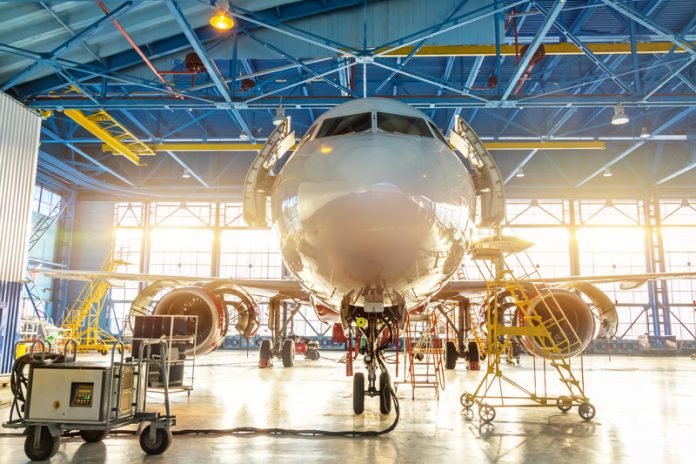Violeta Bulc is European Commissioner for Transport and this article focuses on an aspect of her role that concerns aviation in Europe, as Jonathan Miles, Editor of Open Access Government discovers
Violeta Bulc, European Commissioner for Transport has a number of responsibilities, including facilitating travel in Europe by ensuring that connections between different transport modes, such as railway and air transport are at an optimal level. Another concerns developing a common European Union (EU) standards for transport security and safety to improve the international environment for transport. 1
This article will give a flavour of one aspect of Commissioner’s Bulc’s remit, air transport. In early March 2019, we find out that the European Commission publishes a report about the required actions to strengthen the social agenda in air transport further. The opportunities and challenges faced by aircrews (pilots and cabin crew) in Europe were outlined in this new report. Legal certainty for aircrews is, therefore, provided and looking at the wider picture, we know that promoting high social standards is a top priority within the European Union’s Aviation Strategy.
Violeta Bulc, Commissioner for Transport says: “The European Parliament, Member States, the aviation industry and social partners have called on the Commission to tackle the challenges aircrews in Europe face today. I am glad that we are delivering on this by putting forward a report that identifies concrete actions to maintain and promote high social standards in the aviation sector.”
By way of background, we know that the EU aviation sector directly employs 2 million people, and overall supports 9.4 million jobs, thus benefiting the EU economy by €110 billion every year and in addition, is a central part of the EU’s policy ambition to facilitate both jobs and growth. 2 In a statement from the European Commission in January this year, we find out that 2018 was a good year for transport in the EU and, of course, part of that is to do with aviation as some extracts from the statement below explain.
“New EU rules to better support the mental fitness of aircrew were introduced. This comes as a follow-up to the GermanWings Flight 9525 crash. The rules include a support programme, alcohol testing and psychological assessments for aircrews.
“In aviation: decreased emissions/km by 40% vs. 1992; new A330neo with leap engine uses 25% less fuel. With new technologies, we gained an additional 36 seconds, and cut kerosene consumption by 5kg per flight.”3
In an additional positive development, in March 2019, we learn that the European Commission and the State of Qatar initialled an aviation agreement which is the first time that this has happened between an EU member and a country from the Gulf region. In essence, the agreement upgrades the rules and standards for flights between Qatar and the EU. In this vein, a new global benchmark is committed when it comes to fair, strong, competition mechanisms, and including provisions not normally included as part of bilateral air transport agreements, such as environmental or social matters.
Expressing delight at the news of an agreement that goes far beyond traffic rights, Commissioner for Transport Violeta Bulc comments: “We delivered! Qatar was the first partner with whom we launched negotiations following our adoption of the Aviation Strategy for Europe – now it is also the first one to cross the finish line! More than that – the agreement sets out ambitious standards for fair competition, transparency or social issues. It will provide a level playing field and raise the bar globally for air transport agreements. This is a major upgrade compared to the existing framework, and our joint contribution to making aviation more sustainable!”
Not forgetting the wider perspective, it’s important to say that this agreement fits in with the EU’s concerted efforts to ensure open, fair competition and high standards for global aviation, in keeping with the Aviation Strategy for Europe. 4
Finally, let’s think about the European Commission’s ambition for a climate neutral Europe by 2050. We know that near the end of 2018, they adopted 2050 – A Clean Planet for all. The strategy shows how Europe can lead the way to climate neutrality in a number of ways, for example, by investing in realistic technological solutions and empowering citizens. Let’s then leave the last word to Commissioner for Transport, Violeta Bulc who shares her exciting thoughts on the role of transport as part of this wider climate picture painted here.
“All transport modes should contribute to the decarbonisation of our mobility system. The goal is to reach net-zero emissions by 2050. This requires a system approach with low and zero emission vehicles, strong increase in rail network capacity, and a much more efficient organisation of the transport system, based on digitalisation; incentives for behavioural changes; alternative fuels and smart infrastructure; and global commitments. All this driven by innovation and investments.” 5
References
1 https://ec.europa.eu/commission/commissioners/2014-2019/bulc_en
2 http://europa.eu/rapid/press-release_IP-19-1489_en.htm
4 http://europa.eu/rapid/press-release_IP-19-1490_en.htm
5 http://europa.eu/rapid/press-release_IP-18-6543_en.htm
Open Access Government











